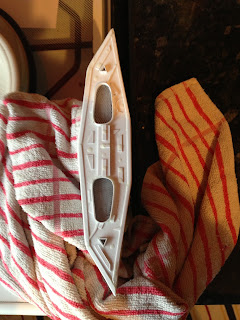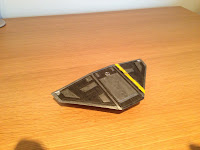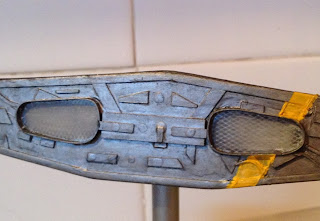Many years ago, I spent rather too much time playing a game called Elite. I had the Electron version at home, but played the BBC version during school lunch (and science lessons, not sure how I managed that..).
Anyway, quite recently a sequel has been announced and funded via kickstarter (Elite Dangerous Kickstarter), reminding me how much I used to love flying my spaceship around.
A few ideal googles later, and I stumbled over a rather impressive model build by a chap called Ian Lawrence. Check it out here. That looked rather cool, if quite big! I then discovered he'd later done a smaller (1/125th scale) version which you can see here.
I followed the link to the paper fold together mesh and a small bit of sticking later had a little paper model. It really wasn't the same.
Now. I've never made a model from scratch before. I've barely made any models that aren't built from lego come to that, but I decided to not let that stop me. How hard could it be.
So, after a small amount of shopping for supplies, and re-reading Ian's build diaries a few times, off I went.
Starting the build:
Back to the paper mesh. I printed that out - I didn't scale anything up, so the final model is going to be even smaller than Ian's at about 1/256th scale.
I cut the paper shapes out and stuck them to a A4 sheet of clear styrene.
Next up was cutting those out from the sheet.
Now, Ian's had far more experience than me at this (I had none...), and it may have been simply my technique or the exact type of plastic sheet I was using, but for me they were a complete nightmare to cut.
The general method seems to be score and snap (which works really well on all the slightly thinner sheets I have that I used later). On these thicker sheets, if I just attempted to snap a scored edge, they had a tendency to shatter and splinter. My technique ended up being to score, then lay a ruler against the scored edge, the bottom of the edge on the edge of the table, and then ease the plastic to be snapped off up and down until it finally snapped cleanly. This was hard work.
Anyway. After much stress and quite a few cracked pieces, I ended up with:
Just adding a couple of links to an awesome site with awesome monster creations!
























.JPG)











